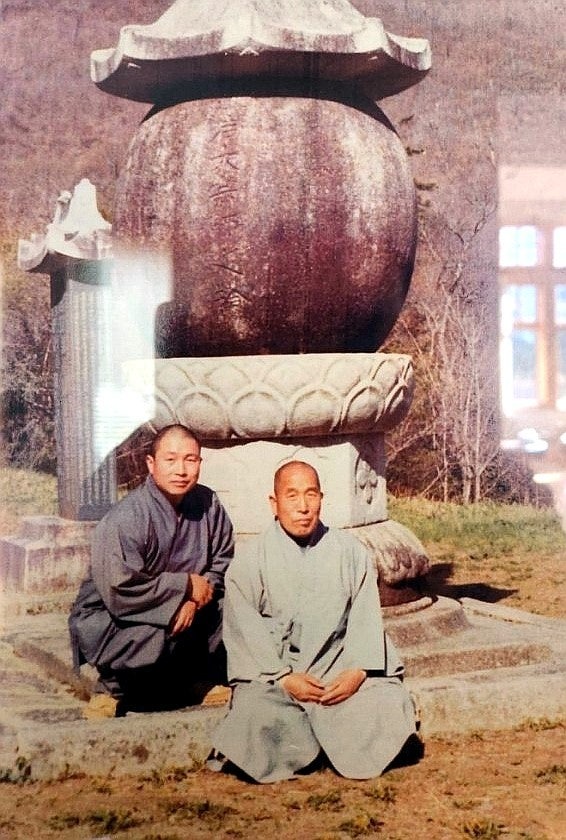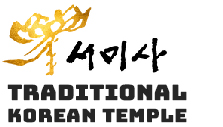Ven. Ilmyeon's Life and Buddhist Administration
Quote from Kai Chan Andrew on 07/14/2025, 3:04 amVen. Ilmyeon's Life and Buddhist Administration
Birth and Ordination: Ven. Ilmyeon (Hwang Il-myeon) was born in Gyeongju, Gyeongsangbuk-do in 1947. In 1959, at the age of 13, he was ordained by Ven. Myeongheo at Haeinsa Temple in Hapcheon. His family faced financial difficulties in his childhood, and the great damage to his hometown from Typhoon Sarah in 1959 became the catalyst for his ordination.
Practice and Academia: He graduated from Haeinsa Buddhist College and Dongguk University's Department of Buddhist Monastic Studies. After his ordination, he not only engaged in Seon (Zen) practice but also showed great interest in Buddhist administration, education, and social welfare.
Buddhist Activities: He held various important positions, including member of the Jogye Order Central Council, abbot of Bongseonsa Temple, director of the Jogye Order Education Bureau, first head of the Military Chaplaincy Corps, and chairman of the board of Dongguk University. He greatly contributed to the administration, education, and propagation of Korean Buddhism, particularly by leading initiatives in financial transparency, monastic welfare, and Buddhist education reform.
Activities in the U.S.: In the early 1980s, he moved to the United States and decided to establish a temple for local Korean Buddhist practitioners and Buddhist devotees. He founded Seomisa Temple in Tacoma, Washington State.
The Founding Process of Seomisa (1983-1986)
Background of Founding: In 1983, upon arriving in Tacoma, Ven. Ilmyeon felt the need for a central place of Buddhist faith for local Korean Buddhist practitioners and the community. He decided to establish a temple in traditional Korean style.
Securing Land and Preparation: He secured approximately 5,000 pyeong (approx. 4 acres) of land near Tacoma's Koreatown and actively traveled between Korea and the U.S. to raise funds and gather personnel necessary for the temple's construction.
Traditional Style and Material Import: He meticulously focused on building the temple using traditional wooden architectural methods, importing all major construction materials (wood, stone, roof tiles, etc.) directly from Korea. The process involved pre-processing materials in Korea according to the architectural plans, transporting them to the U.S., and assembling them on-site.
Construction Period: The main temple hall and auxiliary buildings were completed over approximately three years, from 1983, and the dedication ceremony was held in 1986. During this process, the local Korean community and Americans showed great interest, and the completed Daeungjeon (Main Hall) was recognized as a beautiful architectural masterpiece by both Koreans and locals.
Ven. Ilmyeon's Philosophy and Influence
A Master of Administration and Propagation: Ven. Ilmyeon held the belief that "for Buddhism to contribute to society, there must be masters in administration," and he dedicated his life to temple operation and Buddhist administration. This philosophy was directly reflected in the establishment of Seomisa and the spread of Korean Buddhism in the U.S.
Contribution to the Local Community: Seomisa grew to be more than just a place of worship; it became a hub for culture, education, and welfare where both Korean immigrants and locals could participate. Under Ven. Ilmyeon's leadership, various Buddhist events, cultural programs, and community outreach activities were actively carried out.
Summary Table
Year
Key Content and Activities
1947
Born in Gyeongju, Gyeongbuk
1959
Ordained at Haeinsa Temple, by Ven. Myeongheo
1983
Began construction of Seomisa Temple in Tacoma, Washington State, USA
1983~1986
Imported materials from Korea, built traditional style temple
1986
Held the dedication ceremony for Seomisa
Afterward
Continued contributions to Korean Buddhism and the local community in the U.S., sustained various Buddhist, cultural, and educational activities
Ven. Ilmyeon is a representative administrative monk who practiced both the tradition and modern role of Buddhism in both Korea and the United States. Through the establishment of Seomisa, he became a symbolic figure of Korean Buddhism in North America.
Ven. Ilmyeon's Life and Buddhist Administration

Birth and Ordination: Ven. Ilmyeon (Hwang Il-myeon) was born in Gyeongju, Gyeongsangbuk-do in 1947. In 1959, at the age of 13, he was ordained by Ven. Myeongheo at Haeinsa Temple in Hapcheon. His family faced financial difficulties in his childhood, and the great damage to his hometown from Typhoon Sarah in 1959 became the catalyst for his ordination.
Practice and Academia: He graduated from Haeinsa Buddhist College and Dongguk University's Department of Buddhist Monastic Studies. After his ordination, he not only engaged in Seon (Zen) practice but also showed great interest in Buddhist administration, education, and social welfare.
Buddhist Activities: He held various important positions, including member of the Jogye Order Central Council, abbot of Bongseonsa Temple, director of the Jogye Order Education Bureau, first head of the Military Chaplaincy Corps, and chairman of the board of Dongguk University. He greatly contributed to the administration, education, and propagation of Korean Buddhism, particularly by leading initiatives in financial transparency, monastic welfare, and Buddhist education reform.
Activities in the U.S.: In the early 1980s, he moved to the United States and decided to establish a temple for local Korean Buddhist practitioners and Buddhist devotees. He founded Seomisa Temple in Tacoma, Washington State.

The Founding Process of Seomisa (1983-1986)
Background of Founding: In 1983, upon arriving in Tacoma, Ven. Ilmyeon felt the need for a central place of Buddhist faith for local Korean Buddhist practitioners and the community. He decided to establish a temple in traditional Korean style.
Securing Land and Preparation: He secured approximately 5,000 pyeong (approx. 4 acres) of land near Tacoma's Koreatown and actively traveled between Korea and the U.S. to raise funds and gather personnel necessary for the temple's construction.
Traditional Style and Material Import: He meticulously focused on building the temple using traditional wooden architectural methods, importing all major construction materials (wood, stone, roof tiles, etc.) directly from Korea. The process involved pre-processing materials in Korea according to the architectural plans, transporting them to the U.S., and assembling them on-site.
Construction Period: The main temple hall and auxiliary buildings were completed over approximately three years, from 1983, and the dedication ceremony was held in 1986. During this process, the local Korean community and Americans showed great interest, and the completed Daeungjeon (Main Hall) was recognized as a beautiful architectural masterpiece by both Koreans and locals.
Ven. Ilmyeon's Philosophy and Influence
A Master of Administration and Propagation: Ven. Ilmyeon held the belief that "for Buddhism to contribute to society, there must be masters in administration," and he dedicated his life to temple operation and Buddhist administration. This philosophy was directly reflected in the establishment of Seomisa and the spread of Korean Buddhism in the U.S.
Contribution to the Local Community: Seomisa grew to be more than just a place of worship; it became a hub for culture, education, and welfare where both Korean immigrants and locals could participate. Under Ven. Ilmyeon's leadership, various Buddhist events, cultural programs, and community outreach activities were actively carried out.
Summary Table
|
Year |
Key Content and Activities |
|
1947 |
Born in Gyeongju, Gyeongbuk |
|
1959 |
Ordained at Haeinsa Temple, by Ven. Myeongheo |
|
1983 |
Began construction of Seomisa Temple in Tacoma, Washington State, USA |
|
1983~1986 |
Imported materials from Korea, built traditional style temple |
|
1986 |
Held the dedication ceremony for Seomisa |
|
Afterward |
Continued contributions to Korean Buddhism and the local community in the U.S., sustained various Buddhist, cultural, and educational activities |
Ven. Ilmyeon is a representative administrative monk who practiced both the tradition and modern role of Buddhism in both Korea and the United States. Through the establishment of Seomisa, he became a symbolic figure of Korean Buddhism in North America.
Uploaded files:
- You need to login to have access to uploads.
